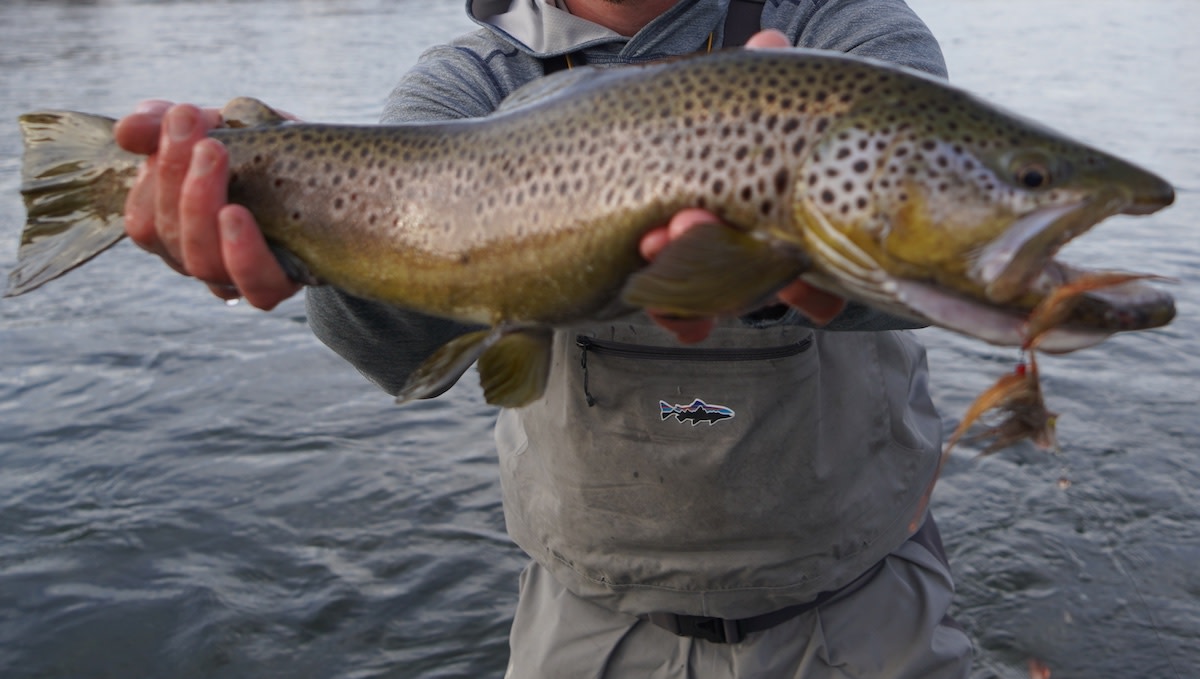
Outdoors clothing giant and activist business Patagonia has thrown their weight behind a lawsuit against the Trump Administration over changes it made this year to the enforcement of the Clean Water Act. Their complaint alleges that the EPA’s rollback of previous standards about which streams and wetlands qualify for protection from pollution—and subsequent replacement standards—violate the landmark, 1972 Act and put Americas health, watersheds, fisheries, and wildlife in danger. Read our article about the new Navigable Waters Protection Rule here.
“Patagonia is in business to save our home planet and fighting to protect irreplaceable natural resources is why we are in business,” said Avi Garbow of Patagonia’s legal team. “Additionally, our business benefits from regulations that protect healthy ecosystems, whereas the industries lined up supporting the Trump Administration’s new rule would prefer weaker regulations so they can use our waters as their dumping grounds. The EPA didn’t do its job here. There is no scientific basis for this new rule, and it is fundamentally at odds with the text and spirit of the Clean Water Act.”
Patagonia is intervening in the suit filed by Earthjustice on behalf of Pascua Yaqui Tribe, Bad River Band of Lake Superior Chippewa, Quinault Indian Nation, Fond du Lac Band of Lake Superior Chippewa, the Menominee Indian Tribe, the Tohono O’odham Tribe, Mi Familia Vota, Puget Soundkeeper Alliance, Idaho Conservation League, and the Sierra Club.
“The Navigable Waters Rule exceeds the agencies’ statutory authority and is contrary to the Clean Water Act’s text, structure, objectives, and legislative history requiring broad protection of all the Nation’s waters, because its provisions exclude waters from the protections required and afforded by the Act,” the lawsuit states. The EPA has contested Patagonia’s standing in the case. This will be Patagonia’s second time suing the Trump Administration, after previously fighting the dismantlement of the Bears Ears National Monument.
At issue here is the fluctuating definition of a phrase within the Clean Water Act: “Waters of the United States” or WOTUS. The Act claims these waters to be protected from dredging, filling, and pollution without a permit, but failed to elaborate on what exactly qualified, leading to decades of legal uncertainty. After a series of Supreme Court decisions muddied the waters even further, the EPA under the Obama Administration attempted to clarify through a rulemaking process. After five years of research and public input they released the Clean Water Rule, which generally stated that water with significant hydrological or ecological connections to navigable waters were protected under the 1972 Clean Water Act, including tributaries of navigable waters, groundwater, ephemeral streams, and wetlands.
That rule, however, was highly unpopular with the extraction, development, and agriculture industries, and 13 states sued to block its implementation. After a number of court battles it eventually went into effect in 22 states but not the others, leading to a regulatory nightmare. Donald Trump spoke frequently about the federal overreach of Obama’s Clean Water Rule while on the campaign trail and signed an executive order shortly after taking office directing the EPA and Army Corps to rescind and replace the rule. They completed the withdrawal last September and issued new rules in June. Those new enforcement regulations, called the Navigable Waters Protection Rule, remove CWA protection from most of the nation’s wetlands and any other waters without a year-round, surface connection to major waterways. The EPA’s own Science Advisory Panel did not approve the new rule and said it ignores the best available science about the connectivity of waterways. Still, President Trump, EPA Administrator Andrew Wheeler, and many corporate interests cheered the change.
“EPA and the Army [Corps of Engineers] are providing much needed regulatory certainty and predictability for American farmers, landowners, and businesses to support the economy and accelerate critical infrastructure projects,” Wheeler said. “After decades of landowners relying on expensive attorneys to determine what water on their land may or may not fall under federal regulations, our new Navigable Waters Protection Rule strikes the proper balance between Washington and the states in managing land and water resources while protecting our nation’s navigable waters, and it does so within the authority Congress provided.”
Due to numerous challenges from several states and many private entities like this one from Patagonia et. al in federal district courts around the country, however, the new Navigable Waters Rule seems likely to face a fate similar to its predecessor: legal attacks from all angles, judicial blockage in certain states, and outright dismantlement if and when the presidential regime changes. Only two days after the EPA released the Navigable Waters Rule in April, the Supreme Court ruled in a separate case that a wastewater treatment plant in Hawaii could not dispose of sewage by injecting it underground because doing so was “the functional equivalent of a direct discharge” into the ocean, yet another new test for the application of the CWA. That ruling may come into play if Patagonia’s or any of the other current suits reach the high court.





Conversation